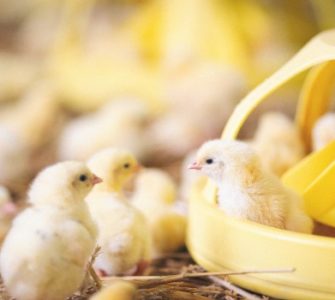Sentinel broilers, PCR testing help isolate, identify evolving IBV populations in Arkansas
How do you look for new serotypes of a virus that might be circulating in an area? Sentinel birds are a good place to start, according to Abigail Reith, DVM, a technical services veterinarian for Zoetis.
In a recent study in Arkansas, she used infectious bronchitis (IB) spires designed to look for serotypes of infectious bronchitis virus (IBV), a coronavirus that is a highly infectious respiratory disease in chickens.
“We knew that, potentially, we had a new serotype floating around, so we wanted to use the single birds to see if we could isolate [the virus] and identify it in the broiler breeder houses,” she told Poultry Health Today.
Sentinel birds are frequently used in the poultry industry to get a better handle on IB serotypes. Reith’s project used 100 sentinel birds that only received a coccidiosis vaccine at the hatchery and then were reared in a facility with no other poultry contact.
“At this point, we’re thinking these 28-day-old birds have not been exposed to any sort of bronchitis, and we can place them in a house and look for active infection floating through the house by [checking] them 7 to 11 days later,” she said. “The idea is to place naïve birds in an environment where they are exposed…, so we have an idea of what is in that house at that time period.”
The production systems in question were located in Arkansas and had issues with both airsacculitis in broilers and in the egg production and quality issues in broiler breeders. According to Reith, airsacculitis is not a disease itself but rather a symptom of a disease caused by bacteria such as Escherica coli, Mycoplasma gallisepticum, Mycoplasma synoviae or Mycoplasma meleagridis. It typically peaks in the late winter and early fall, in keeping with cold/heat-stress and poor ventilation.
Reith and her team took samples and performed a generic “yes” or “no” polymerase chain reaction (PCR) bronchitis test on the sentinel birds’ tracheas after necropsies. They found that all of the sentinel birds were positive for IBV.
They followed that discovery with PCR testing for the different serotypes, which showed the birds were infected with Delmarva/1639 (DMV/1639) of IBV — a serotype of IB first seen on the East Coast. Symptoms of DMV/1639 were different in Arkansas than they were on the East Coast, Reith said.
“Surprisingly, it was more a kidney form at first [on the East Coast]. When it became a big issue in 2014-2015, [growers] were seeing kidney bronchitis — the nephropathogenic form — with some respiratory symptoms. As we’re seeing it in Arkansas, it’s very rare to see flushing in the houses, and it’s more the respiratory type and airsacculitis, as well as decreased egg production and wrinkled eggs.”
How DMV/1639 jumped from Delmarva to Arkansas remains a mystery, but it’s suspected that contaminated fecal matter on eggs, equipment and/or people may have been a factor, she added. In this study, Reith found:
- Numerous IBV serotypes are circulating in Arkansas.
- Sentinel birds can be used to help identify the challenge and guide in vaccination protocol.
- A generic PCR will determine if IBV is there or not, then targeted testing for specific serotypes will identify those being masked by a vaccination protocol or field challenge.
No silver bullet, but…
There’s no silver bullet to control IB, Reith said, but management is just as critical as vaccination in controlling the virus.
For example, in addition to vaccination, maintaining good ventilation and keeping ammonia levels low are critical for keeping the virus in check. Biosecurity also is important. “The hope is that people can stick to the rules and not spread the virus around,” she said. “There’s always room for improvement with house management. You just can’t underestimate biosecurity, can you?”
Matching vaccination programs with the field challenge is also critical.
Posted on October 7, 2019

















